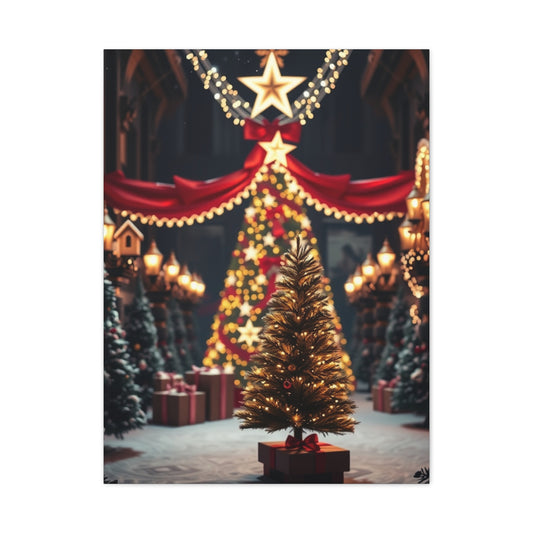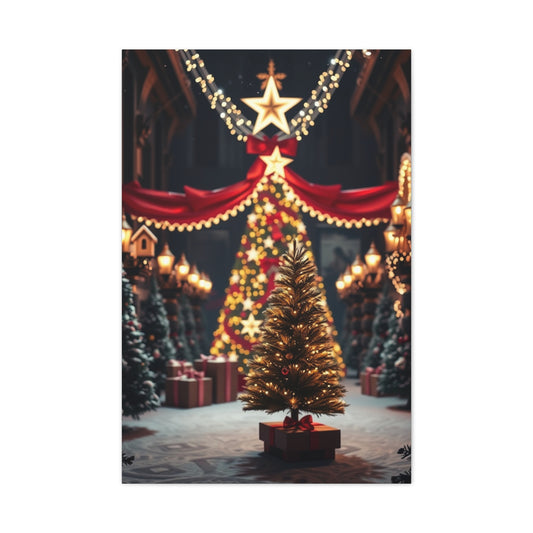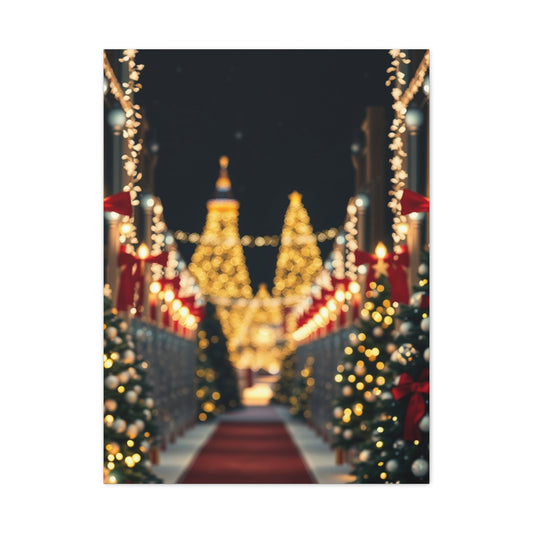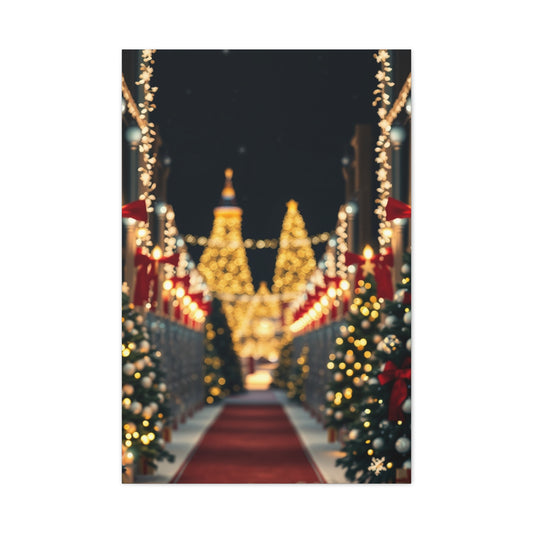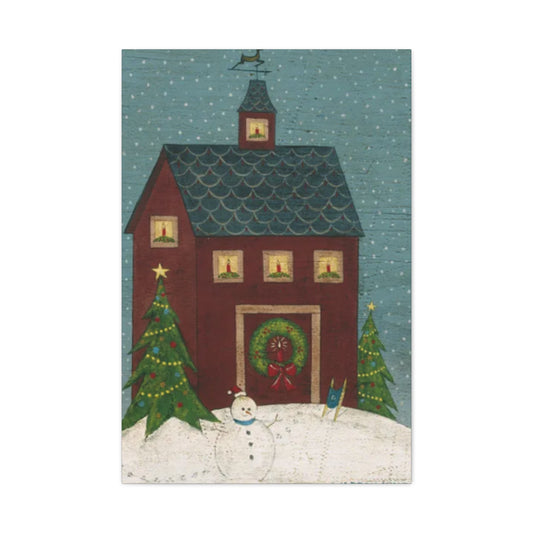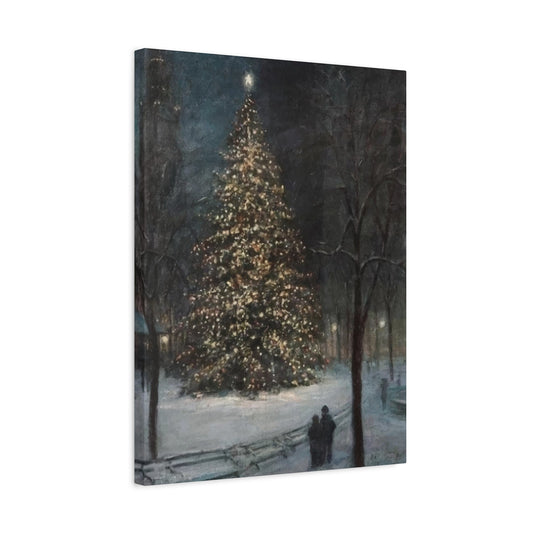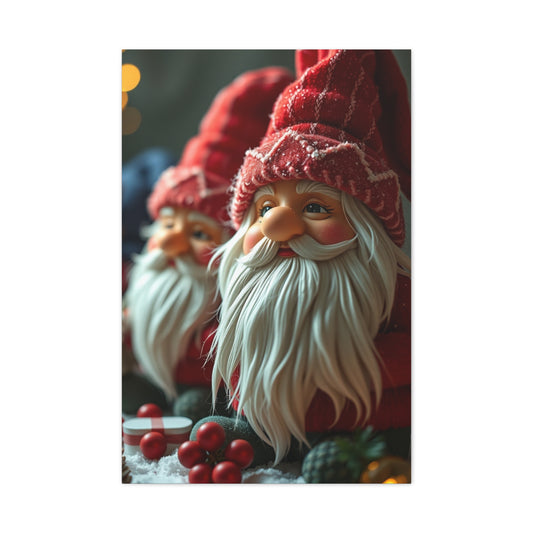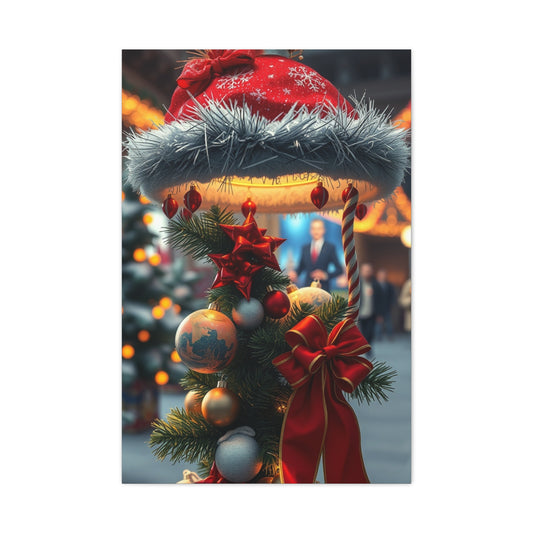Fear grips us. It fascinates and unsettles, inviting us into realms we’d rather not explore but can’t seem to resist. While horror films and books have long been masters of the genre, photography wields a unique power—capturing dread in the frozen silence of a single frame. Horror photography combines emotional storytelling, cinematic techniques, and symbolic imagery to provoke reactions from deep within the psyche. Here are 16 horrifying photography concepts that tap into our darkest fascinations, perfect for conjuring spine-tingling scenes this Halloween season.
1. Shadows That Swallow: Unseen Terrors of the Night
Darkness is not merely an absence of light—it is an environment, a presence, and a vessel for imagination. Within horror photography, darkness serves as more than a visual void; it becomes a narrative device that whispers instead of shouts. It stretches the edges of perception, forcing viewers to grapple with what might be concealed beyond their sightline.
One of the most universal human anxieties is the fear of the unknown. The night, veiled in opacity, breeds uncertainty and vulnerability. It restricts our vision, undermines our spatial awareness, and enhances our suspicion. This emotional framework is what horror photography expertly exploits. Rather than showcasing a clear threat, darkness suggests possibilities—none of them comforting.
Photographer Christopher McKenney is widely known for his haunting explorations of this visual terrain. His work often features faceless figures, ambiguous settings, and heavy use of shadows that seem to swallow entire parts of the frame. In one particularly evocative image, a ghostly figure stands beneath a white sheet in a forest cloaked in gloom. The scene appears frozen, yet charged with tension. The faceless subject could be anything—human, spirit, or illusion. It's the uncertainty that unsettles us.
In compositions like these, darkness becomes a character in itself. It looms in the background like a predator, encasing the subject in a cocoon of isolation. Only fragments of the environment are revealed—a tree limb, a patch of earth, the edge of a garment. This selective visibility invites the viewer to fill in the blanks, and the human mind rarely fills those blanks with anything benign.
This style of horror imagery does not rely on the grotesque. Instead, it evokes dread through implication. The suggestion of a threat is more potent than an explicit one. That’s the magic of minimalism in horror—the visual austerity that forces the viewer into an active role, imagining monsters just outside the frame.
The atmosphere also plays a significant role. Fog, decay, and muted tones contribute to a mood of quiet desperation. The silence in these images is deafening; it screams without sound. By choosing environments that feel abandoned or unreachable, the photographer enhances the emotional distance, reinforcing the idea that help is far away and escape is unlikely.
This approach is especially effective when photographing in natural settings. Forests at dusk, empty fields under overcast skies, and derelict paths leading nowhere all become stages for a silent symphony of fear. These spaces don’t require added horror—they merely need to be observed under a lens of foreboding.
From a compositional perspective, the key to mastering this type of photography lies in contrast and suggestion. Overexposing or revealing too much diminishes the impact. Underexposing the edges of the frame, allowing shadows to claim ownership of space, provides the necessary ambiguity. The viewer’s eye is drawn to what’s barely visible, not what is lit plainly.
|
Related Catagories: |
Editing plays a supporting role here. Post-processing can intensify darkness without losing texture. Subtle vignettes, reduced clarity in background layers, and lowered highlights all contribute to the obscurity necessary for this genre. These techniques enhance rather than fabricate the eeriness, keeping the image grounded while lifting it into the realm of psychological discomfort.
Ultimately, darkness in horror photography isn’t just visual—it’s emotional. It represents loss, disorientation, and an omnipresent force that can neither be touched nor escaped. It doesn’t attack directly. It waits, it watches, and most terrifyingly, it makes us wait too.
2. Erased Humanity: Eyeless Figures as Horror Icons
Few features in the human body are as expressive—or as vital—as the eyes. They are mirrors of the soul, interpreters of mood, and primary tools of interpersonal connection. When they are obscured, removed, or distorted in horror photography, the result is a profound disconnection. The viewer searches for emotional entry points, but finds none. This visual void leaves a chilling impression that lingers long after the image disappears from view.
Photographer Engin Akyurt creates portraits that expertly dismantle these humanizing features. His subjects are often enveloped in shadow or bathed in harsh contrast, with their eyes consumed by darkness. These voids in the facial structure serve as psychological sinkholes—drawing in the viewer and offering nothing in return. What’s left is a being that looks human, but lacks its emotional engine.
Eyelessness in horror imagery operates on multiple symbolic levels. It strips the subject of identity and intent. Without eyes, it’s impossible to gauge emotion, determine threat levels, or establish empathy. The result is a creature suspended between the familiar and the alien. The closer it resembles us, the more disturbing its inhuman traits become.
This technique is especially potent in portraiture. A viewer instinctively seeks facial cues—expressions, micro-movements, glances—to decode meaning. When those cues are absent or corrupted, the brain struggles to interpret the subject, creating cognitive dissonance. It’s this struggle that creates a visceral, almost instinctual fear.
In horror photography, eyeless figures are often positioned to maximize unease. Whether facing directly toward the lens or turned slightly away, their lack of gaze isolates them. They do not connect with us, and perhaps cannot. This perceived emotional emptiness amplifies the idea that something essential is missing—not just in the eyes, but in the soul.
Darkness around the eyes is not the only method. Photographers sometimes use physical modifications—bandages, masks, makeup, or even digital alterations—to achieve the same effect. In some cases, the sockets are rendered pitch-black, reflecting no light at all, as though they lead to some unknowable abyss. This is not merely a stylistic choice, but a conceptual one. The eyes become gateways to horror rather than windows to the soul.
Lighting also contributes to the eerie tension. Harsh side-lighting or low-key setups help sculpt the face while concealing the eyes. Soft shadows across the brow bone or deep-set sockets can shroud them naturally, requiring no post-processing at all. It’s the interplay between light and shadow that makes the absence believable—and terrifying.
Clothing and environment can enhance this effect. Putting an eyeless figure in an ordinary setting—like a bedroom, hallway, or schoolyard—elevates the sense of surrealism. The familiarity of the location clashes with the grotesque anomaly of the subject, unsettling the viewer through contrast. When horror walks into the mundane, it becomes inescapable.
Psychologically, these images tap into deeper fears of soullessness, manipulation, and dehumanization. The loss of eyes symbolizes the loss of self. These figures cannot express remorse or joy. They do not understand love, and they do not comprehend fear. They simply exist—silent, observing, and unknowable.
The concept also blends well with other horror tropes. Eyeless children, faceless brides, black-eyed priests—each variation brings cultural and emotional baggage. The viewer reads into the imagery based on their own fears, memories, and assumptions, allowing for a wide emotional resonance.
For photographers exploring horror portraiture, using eyelessness as a motif allows for creative flexibility. It doesn’t require elaborate props or locations. With strong contrast, careful framing, and a clear psychological vision, even a single subject in a darkened room can become an unforgettable icon of terror.
3. Off-Screen Anxiety: Directing Fear Beyond the Frame
Some of the most powerful horror is not in what we see, but in what we don’t. The imagination, left unrestrained, becomes a playground for dread, and horror photographers have long exploited this psychological tendency. The concept of off-screen terror transforms the boundaries of the image into emotional cliff edges. Every cropped line, every truncated shadow hints at what lies just beyond view.
Ryan Muirhead is one such photographer who expertly taps into this unnerving space beyond the lens. His images rarely depict overt horror. Instead, they suggest it—placing the weight of the scene on the subject’s reaction. A half-lit face, wide-eyed and frozen in fear, looking toward something unseen, becomes a cipher for our own projection. The terror is not in the frame but in the viewer’s mind, sparked by the actor’s visceral performance.
This approach draws on cinematic tension, particularly the suspense-building techniques pioneered by classic horror films. Just as a filmmaker might point the camera at a trembling protagonist rather than the monster, the photographer uses framing and composition to imply presence rather than explicitly showing it. What’s missing becomes more haunting than what’s revealed.
The technique also plays heavily into spatial composition. Leaving open areas in the frame—especially negative space to the side of or behind the subject—creates an unsettling tension. It feels like something is coming. The viewer begins to scan the image for clues, interpreting shadows, corners, and reflections for signs of intrusion. This sense of anticipation is crucial. It holds the viewer in a state of unresolved tension.
Lighting and focus control this experience further. By subtly drawing attention to the subject’s expression while leaving surrounding areas dim or ambiguous, the photographer maintains mystery. The facial cues—dilated pupils, clenched jaws, parted lips—become a language of alarm. Even without context, these expressions are universally understood as fear.
Off-screen anxiety also benefits from strong narrative suggestion. Props, posture, and gesture all point the viewer toward imagined events. A child clutching a teddy bear with knuckles white, a woman backing away from an open doorway, or a man peering from behind a curtain—each of these setups presents an unresolved story, inviting the viewer to imagine the next frame, or worse, what came just before.
This method is not about special effects or extreme visuals. It’s about psychological inference. The audience collaborates with the image, and in doing so, becomes complicit in the construction of their own fear. It’s a uniquely immersive kind of horror, one that grows not from grotesque spectacle but from narrative dissonance and emotional response.
From a technical perspective, using longer focal lengths can compress space and keep the background vague. Shooting at a wide aperture allows the subject to remain crisp while everything around them dissolves into an indistinct blur. This draws the viewer into the moment without offering the comfort of environmental context.
For horror photographers aiming to master subtle terror, the secret lies in restraint. The key is not in how much you show, but in how much you withhold. Fear intensifies in silence. It blooms in ambiguity. By crafting scenes that hint rather than display, you allow the audience to finish the story—and in doing so, to scare themselves.
4. Visceral Reactions: When Phobias Come Alive
Fear lives in the body as much as in the mind. While some horror imagery unsettles with atmosphere and suggestion, other forms aim directly at our core survival instincts—triggering visceral reactions that bypass rationality. These are the images that make skin crawl and stomachs churn, often because they confront phobias we cannot control.
Joshua Hoffine is renowned for transforming these primal fears into horrifying visual realities. In one deeply disturbing composition, a young girl lies peacefully in bed—until we notice cockroaches emerging from her mouth. The juxtaposition is grotesque and compelling. Childhood innocence merges with infestation. Vulnerability is corrupted in the most invasive way.
Phobias operate on an instinctive level. They are not always logical, but they are deeply felt. Arachnophobia, claustrophobia, entomophobia—these are more than words; they are portals to inherited survival responses. In horror photography, these responses become weapons. By visually enacting scenes that reflect common phobias, the photographer bypasses intellectual filters and strikes straight at the nervous system.
The success of phobia-based imagery often lies in its attention to detail. Texture, scale, and placement play critical roles. An insect is not frightening when it’s distant or sterile. But rendered with exaggerated detail—its antennae, carapace, or glistening eyes—the creature becomes intrusive. Especially when it interacts physically with the subject: crawling on skin, emerging from the mouth, or hiding in orifices.
Lighting intensifies the discomfort. Harsh, directed light can create shine on slick surfaces, accentuating slime or movement. Shadows deepen the grotesque, turning each detail into something more sinister. Color palettes also matter—muted flesh tones clashing with deep browns or blacks suggest infection, contamination, or decay.
Staging is crucial. Scenes that feel too artificial can dilute the fear. But when phobia-driven horror is placed in believable contexts—bedrooms, bathrooms, kitchens—it infects reality. We begin to wonder what might crawl from beneath our own pillows. What looks like fiction starts to feel dangerously plausible.
Phobia-based horror is also effective when paired with innocence. Children, pets, clean spaces—all become counterpoints to the intrusion. A spider on a nursery wall, a snake coiled in a bathtub, a rat’s tail peeking from under a bed—all these images feel wrong not just because of the creature, but because of where it appears. The violation of safety heightens the fear exponentially.
From a psychological standpoint, these images tap into our evolutionary defenses. Humans are hardwired to respond with disgust or panic to certain stimuli—things that slither, skitter, sting, or bite. Horror photography leverages this ancient programming, using it to create compositions that don’t just disturb—they repel.
While gore can shock, and suspense can unsettle, nothing triggers the fight-or-flight response quite like a well-crafted image designed to provoke a phobia. It doesn’t rely on storytelling or atmosphere. It gets under the skin—literally and figuratively.
Technically, achieving this level of realism may involve prop-making, practical effects, or careful compositing in post-production. But the strongest results often come from thoughtful composition. Where is the creature placed? How does it relate to the human subject? How much is revealed? When executed with care, the image becomes more than a visual—it becomes an experience.
In the end, phobia-centric horror photography is not about subtlety. It’s about sensation. It’s about wrenching the viewer out of detachment and into the immediacy of physical response. It does not ask permission. It attacks the senses. And in doing so, it reveals how little control we have over what truly terrifies us.
5. Joy Distorted: The Menace of the Painted Smile
Few figures in the realm of horror imagery provoke such a paradoxical blend of emotions as the clown. Initially designed to be figures of mirth and amusement, clowns have steadily descended into the domain of dread. Their exaggerated features—rouged cheeks, oversized shoes, painted-on grins—create a facade of joy that quickly sours when placed in shadow. Horror photography has seized on this duality, turning the clown into an icon of psychological unease.
Lance Reis captures this tension with harrowing precision. His portraits are a visual juxtaposition—brightly adorned jesters cloaked in ominous environments. Whether it's a circus clown peering from a darkened window or a masked figure crouched under a streetlamp, his subjects radiate an uncomfortable blend of playfulness and danger. These are not entertainers—they are predators wearing a performer’s face.
The terror stems from the mask of joy itself. A painted smile that doesn’t change, no matter the context, becomes unnerving. It's a fixed expression with no connection to genuine feeling. The disconnect between facial expression and intent becomes fertile ground for fear. We instinctively distrust what we cannot emotionally read, and the clown—eternally grinning—defies that trust.
This fear isn't just born from fiction. The cultural memory of real-life horrors associated with clown imagery, such as criminal cases or unsettling performances, has embedded a deeper layer of discomfort into our collective consciousness. When horror photographers utilize clowns in their compositions, they're not just playing with visuals—they’re invoking historical and psychological echoes.
Lighting plays a central role in enhancing this unease. A brightly lit clown in an equally cheerful setting might feel quirky. But place that same figure under flickering light, half in shadow, or illuminated only by distant firelight, and the mood shifts dramatically. Contrast becomes king. The brightness of costume against the darkness of background draws attention and implies intrusion. The clown is not where it should be.
Props also tell a story. A balloon in the wrong hand. A toy stained red. A gift box with something unpleasant inside. These simple objects, when paired with the wrong expression, become ominous rather than innocent. The horror doesn't require gore—it thrives on implications.
Compositionally, the clown often benefits from being placed just off-center, lurking, as if caught in a moment it wasn’t supposed to be seen. Whether it’s waiting behind curtains or reflected in a mirror, this partial presence adds to the sense of suspense. The viewer becomes the unwilling witness to something unnatural.
Psychologically, what makes the horror clown so effective is its twisted mimicry. It mimics joy, social interaction, and safety—but does so poorly, inauthentically. It becomes a grotesque parody of human emotion. And in horror photography, parody often becomes nightmare. The clown shows us what happens when laughter loses its soul.
For creators aiming to integrate this theme into their own work, the balance lies in restraint. It’s easy to make a clown bloody or overtly monstrous, but the true horror lies in subtle corruption. A nearly clean face with one smeared cheek. A single tear running through the greasepaint. A grin that stretches just a bit too far. These understated choices allow viewers’ imaginations to carry the fear further than any overt mutilation could.
The clown is not merely a figure of fright—it is a reflection of false cheer and forced performance. It’s a symbol of all the things we’re told should make us happy, turned back upon us with a sneer. In the hands of a horror photographer, the painted smile doesn’t amuse—it menaces.
6. Innocence Undone: The Children Who Terrify Us
Few images are as universally sacred as that of the child. We associate children with innocence, vulnerability, curiosity, and purity. But when horror photography distorts that imagery, the result is uniquely disquieting. A child who inspires fear instead of compassion doesn’t just feel wrong—it unravels the very framework of how we interpret safety and morality.
Farida Davletshina constructs her portraits around this dissonance. Her children are not screaming banshees or demonic apparitions. Instead, they are silhouettes in shadow, figures with softened edges and haunting stillness. By stripping away facial detail and replacing playfulness with stasis, she creates images that reject every cliché of childhood imagery. These children don’t run or laugh. They linger. They stare.
The visual ambiguity is a key element. Without defining features, the child becomes a symbol more than an individual. The viewer projects memory, trauma, and meaning onto the figure. It is no longer just a child in a dress—it is your forgotten dream, your unresolved fear, your haunting memory.
Setting and wardrobe enhance this eeriness. Placing these figures in decaying schools, abandoned homes, or desolate playgrounds taps into fears of neglect, abandonment, and emotional loss. A swing moving with no child in sight. A tricycle tipped over in an empty room. These props suggest stories cut short, laughter turned silent. The horror here is not loud—it is the residue of something once gentle, now gone wrong.
Lighting choices reinforce the tone. Low-key lighting, particularly from below or the side, creates harsh shadows that age the child’s features and obscure their youth. Backlighting creates halo effects that blur the boundaries of identity. These techniques prevent the audience from getting too close. They’re not allowed to feel sympathy—only a sense of alienation.
Compositionally, children in horror photography are often shown alone, framed by vast empty space. This visual choice heightens their fragility while simultaneously making them feel out of place. Isolation becomes a lens for fear, reminding the viewer that something is wrong—not just with the child, but with the world around them.
|
Related Catagories: |
Cinematically, this theme has long been explored—from eerie twins in hallways to nursery rhymes sung off-key. Horror photographers borrow from these cues and elevate them through stillness. A motionless child staring into the camera breaks the rules of portraiture. The expected joy or vulnerability is absent, replaced with accusation or apathy. It creates discomfort because the viewer cannot decode the message. Is the child asking for help, or offering a threat?
There’s also a subversive layer to this theme. Children symbolize the future. When that symbol is corrupted, it reflects a fear not just of the present moment, but of what comes next. A child who frightens us may be an omen, a vessel for inherited trauma, or the result of sins committed long before they were born. Horror photography uses this symbolism to extend its impact far beyond the frame.
Technically, this type of horror benefits from restraint in post-processing. Excessive filters or distortion can undermine the realism that makes these scenes believable. Instead, subtle enhancements—cool color temperatures, softened focus, or muted contrast—keep the scene grounded. The horror is effective because it feels close to real.
Innocent horror is not about loud scares. It’s about unease that builds in the gut and lingers in the spine. It’s about the tension between what we expect and what we receive. When horror photography removes the light from a child’s eyes or silences their play, it doesn't just frighten us. It unsettles something deeper, challenging how we see not just the subject—but the world they inhabit.
7. Surgical Horrors: Vulnerability in Sterile Spaces
Few environments hold as much potential for both healing and horror as a surgical room. It’s a place built on trust—an arena of clinical precision and medical authority. But when this sterile space is inverted, it becomes one of the most harrowing backdrops in horror photography. Rick Jones masterfully taps into this uneasy duality by capturing scenes that weaponize the surgical setting, exposing the frailty of the human body and the terrifying implications of misplaced trust.
Within these clinical confines, horror doesn't need monsters or shadows. The dread comes from the very things that are supposed to save us—scalpels, IVs, heart monitors. These objects, when recontextualized, become instruments of terror. In Jones’ compositions, blood-smeared gloves replace comforting hands. The surgeon’s expression, often hidden behind a mask, offers no assurance. Instead, there’s an eerie neutrality—or worse, indifference.
What makes this genre so disturbing is its grounding in realism. Every one of us, at some point, has laid on a hospital bed or been wheeled down a corridor under fluorescent lights. We’ve closed our eyes and placed our safety into someone else’s hands. Horror photography that captures surgical spaces plays on this universal experience, turning that moment of surrender into a scenario where the roles of caregiver and predator become blurred.
Lighting is a critical element in these images. The stark, overhead illumination typical of surgical theaters eliminates shadows, which paradoxically enhances unease. With nowhere to hide, every blood spatter, every glinting tool is fully exposed. This over-clarity removes the comforting ambiguity present in most horror genres. In surgical horror, what you see is exactly what you get—and what you get is terrifying.
Costuming and set design further deepen the discomfort. Surgeons in outdated or blood-drenched scrubs, masks askew, and cracked examination lights hint at malpractice or madness. The cleanliness we expect in a hospital is gone. Replaced by grime, rust, and disrepair, the space mirrors a loss of professional integrity, and worse, the collapse of humanity itself.
Photographers aiming to capture surgical horror need not rely on heavy effects. The strength of these visuals lies in subtle staging and emotional resonance. A subject lying motionless under harsh light. An abandoned operating table surrounded by unused instruments. An unconscious patient in the care of someone whose motives are unclear. These minimalist scenes speak volumes.
The concept also pairs effectively with body horror—the fear of mutilation, invasion, or transformation. When medical imagery is fused with the suggestion of experimentation or unauthorized procedures, the horror intensifies. We fear not just injury, but the idea of being reassembled into something else—something we didn’t choose. It evokes a loss of autonomy, identity, and bodily integrity.
In post-production, maintaining a sterile color palette—steel blues, dull greens, and blinding whites—helps reinforce the setting’s authenticity. Splashes of crimson provide shocking contrast, guiding the viewer’s eye and reinforcing the theme of violation. Grain and noise can be introduced selectively to add a documentary texture, enhancing realism and immediacy.
Ultimately, surgical horror photography distills one of our deepest anxieties: being conscious in a space where we’re not in control, surrounded by tools that can harm as easily as they can heal. The horror is not in what might come through the door—it’s already standing over you, with a scalpel in hand and a blank expression.
8. Asphyxiated: The Silent Panic of Suffocation
Breathing is one of our most fundamental, involuntary actions—a rhythm so deeply embedded into our being that we only notice it when it’s taken away. The horror of suffocation lies in this sudden loss of an elemental function. Kyle Thompson explores this psychological edge with imagery that captures the essence of breathlessness, using layered visuals and hauntingly silent compositions that evoke a very specific kind of panic—the kind that creeps in, tightens its grip, and leaves no room to scream.
Unlike the overt chaos of gore or violence, suffocation horror is quiet. It operates through pressure, restriction, and implied finality. Plastic sheeting, duct tape, underwater scenes, or enclosed spaces all evoke this sensation. In Thompson’s work, bodies wrapped in translucent materials appear as though frozen in their last breath. Their mouths may be open, their eyes wide, but the material surrounding them mutes all cries. It’s not a horror that attacks—it envelops.
Claustrophobia often walks hand-in-hand with the theme of asphyxiation. These photos manipulate spatial awareness. Subjects may be pinned beneath glass, trapped in confined boxes, or depicted under collapsed structures. The viewer’s eye moves from their restrained limbs to their immobile chests, realizing they are beyond help. This tension builds a visceral response, mimicking the anxiety of being unable to move, speak, or breathe.
Lighting in these scenes is typically low and diffused, mimicking environments where air might be thin or inaccessible. Highlights dance across surfaces—plastic, condensation, sweat—reinforcing the humid discomfort of the space. Subdued color grading, often with cold or clinical tones, heightens the sense of sterility and hopelessness. These images are not red with fury, but grey with impending silence.
Props play a subtle yet potent role. A sealed bag, a taped mouth, a submerged bathtub—each of these items exists harmlessly outside of context. But once reimagined through the lens of suffocating dread, they become harbingers of doom. It’s the ordinariness of these tools that makes them so terrifying. The horror they contain doesn’t announce itself—it waits, it tightens, and then it steals breath.
Another powerful compositional choice in this genre is the use of motionlessness. Unlike images that rely on implied or dynamic movement, asphyxiation photos succeed when the subject appears utterly still. It’s not just fear that the viewer sees—but paralysis. The stillness evokes a before-and-after moment frozen in time, as if the frame has captured that precise instant between panic and blackout.
This type of horror is particularly affecting because it’s internal. We don’t recoil from wounds or flee from monsters. We tense up, hold our breath without realizing it, and only release it once the image is gone. The empathy is physical. We feel what the subject feels. And that intimacy intensifies the fear.
In post-processing, clarity and texture are key. Skin pressed against plastic should show stress—stretched pores, fogged glass, tension in the fingertips. Veins around the neck may become prominent. The pressure of containment must be tangible. Light must refract and scatter. Even without motion, the image must breathe. Or, more accurately, fail to breathe.
Asphyxiation as a photographic theme also connects to wider symbolic ideas—control, punishment, despair, and the desperation for liberation. It speaks to abuse, silence, and helplessness. These layers make the images powerful beyond aesthetics. They tell stories not only of fear, but of struggle, of captivity, of survival denied.
Whether portraying literal suffocation or using it metaphorically, horror photography that leans into this theme carves out a space for tension unlike any other. It’s horror that doesn’t yell—it whispers into your lungs, makes you aware of every inhale, and dares you to hold it a little longer.
9. Grasping from Below: When Disembodied Hands Attack
Body parts—especially hands—are benign until used out of context. Joshua Hoffine constructs tableaux in which arms reach from beneath the floorboards, dragging victims into darkness. These disembodied limbs evoke terror by divorcing action from origin. Are the hands human? Are they alive? The absence of answers forces the mind into uncomfortable speculation, which is precisely where effective horror resides.
10. Rituals Reimagined: Religion as a Vessel for Dread
Religious symbols hold deep psychological influence. Horror photography manipulates this influence by transforming sacred signs into emblems of doom. In Alex Stoddard’s “Servant,” a man with a crimson-stained face and a bleeding cross etched into his chest becomes a nightmarish inversion of Christ. Arms outstretched, he mirrors sacrifice while embodying possession or cult allegiance. This recontextualization of faith imagery creates a visceral emotional impact by confronting belief and blasphemy in a single frame.
11. Seduction and Savagery: The Elegance of Vampirism
The vampire figure dances between elegance and danger. Jannike Viveka crafts imagery where the undead don bridal garments and lace, deceiving the viewer with their appearance before revealing their fangs. The stark contrast between beauty and brutality forces us to question appearances. A subject’s pose may be serene, but the blood on her lips tells another story. It’s a narrative of seduction turned predation.
12. Decomposing Humanity: The Horror of Resurrection
Zombies represent the perversion of life—a body with no soul, a face with no recognition. Lance Reis explores this theme in haunting portraits that show decay in exquisite detail. Tattered uniforms, peeling flesh, and clouded eyes are not just signs of physical collapse but of existential dread. These figures aren't just dead—they're reminders of what we could become.
13. Death Uncovered: The Terror of Discovery
Sometimes horror comes not from the act of violence but from its aftermath. Alex Stoddard’s imagery of corpses in nature confronts us with silence—the kind that follows tragedy. A lifeless body by a stream raises more questions than answers. The framing creates a voyeuristic discomfort. We are not watching horror unfold—we have arrived too late, which somehow feels worse.
14. Lost in the Wild: Fear of Isolation
Remote environments carry their own brand of fear. In a forest, a snowy plain, or fog-drenched trail, isolation becomes the monster. Henri Prestes paints these lonely landscapes with suspense. His faceless figures wander through emptiness, their destinations unknown. The horror lies in the expanse—in not knowing where you are, who is watching, or what might emerge from the mist.
15. Haunted Habitats: Domestic Spaces Turned Malevolent
Home is supposed to be a haven. But when walls whisper secrets and doors creak on their own, even the familiar becomes sinister. Jannike Viveka’s portraits of haunted homes take viewers into decayed interiors where shadows loom and presences linger. Here, the horror is not just what’s inside the house—it’s that the house itself has become malevolent, cursed by history and memory.
16. Desire and Dread: Horror Woven with Eroticism
Where fear meets fantasy, horror blends with sensuality. Ashley Von Helsing’s visuals dive into this psychological collision, incorporating fetish elements like latex, masks, and restraint. Her models are poised between seduction and peril. In her world, desire is dangerous, and what is beautiful can just as easily destroy. This overlap of intimacy and threat mirrors our deepest, most confusing instincts.
Tap Into the Macabre With Horror Photography
Horror photography transcends traditional storytelling. It doesn’t just aim to shock or repel; it seeks to disturb the psyche, stir buried memories, and awaken irrational fears. It invites photographers to become directors, lighting designers, set builders, and storytellers—all within the boundaries of a still frame.
Whether using surrealism, suspense, or raw realism, these concepts allow for deep creative exploration. Horror is endlessly versatile—capable of being subtle or sensational, gory or ghostly, classic or contemporary. From the whisper of movement in the shadows to the loud scream of violence mid-frame, the genre gives artists permission to channel the eerie, the grotesque, and the unspoken.
This Halloween, don't just consume horror—create it. Dive into these photography concepts, experiment with unsettling visuals, and let your imagination stalk the line between fascination and fear. Your camera is your lantern in the dark—use it to reveal the monsters hiding just beyond the frame.










